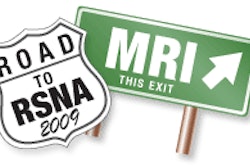Wednesday, December 2 | 3:40 p.m.-3:50 p.m. | SSM12-05 | Room S102D
If there was any doubt how the Deficit Reduction Act (DRA) of 2005 would affect procedure volume for radiologists, researchers at Thomas Jefferson University in Philadelphia have confirmed that private-office imaging volume decreased 2% in 2007, reversing annual growth of 8.4% from 2002 to 2006.The surprising fact from the study is that nonradiologist physicians bucked the downward trend in 2007 with volume growth of 7.6%, after annual growth of 24.7% from 2002 to 2006.
Lead study author Dr. Vijay Rao, chair of the department of radiology at Thomas Jefferson, credited self-referrals for the disparity between radiologists and nonradiologists.
"Radiologists obviously do not self-refer, as they don't control their referrals," she said. "Nonradiologists were able to increase their volume by increasing their self-referrals, so they were able to mitigate the impact of DRA on their practice. That is not what we thought we would see, but we were intrigued by that finding."
The study also found that office MRI payments to radiologists dropped 30.1% in 2007 after annual growth of 11.2% in the previous five years. Nonradiologists' office MRI payments increased 25.7% yearly, with the growth rate slipping to 23.5% in 2007.
The study found similar results for CT. Radiologists' private-office volume for CT increased 11.2% annually from 2002 to 2006, then increased 2.9% in 2007. Nonradiologists' office volume increased 31.8% for the five-year period, then increased another 18.1% in 2007.
Office CT payments to radiologists increased 13.3% from 2002 to 2007, before falling to 5.2% in 2007. Nonradiologists' office CT payments increased 35% for the five-year period before rising 8.3% in 2007.
"One can speculate that because they are able to self-refer, [nonradiologists] are trying to mitigate the payment losses or make up for that drop in revenues by increasing the volume," Rao said. "I think it is a trend to watch carefully to see if the volume will continue to increase for nonradiologists and what the impact is on radiologists going forward."
Rao said that reduced volume may have prompted some radiology practices to close, reduce their hours, or cancel expansion plans because of less revenue. However, she said that conclusion is speculative, because the study did not investigate that information.



.fFmgij6Hin.png?auto=compress%2Cformat&fit=crop&h=100&q=70&w=100)




.fFmgij6Hin.png?auto=compress%2Cformat&fit=crop&h=167&q=70&w=250)











